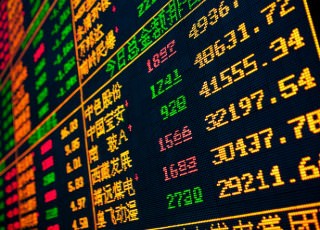Foreign exchange trading can bring huge profits or losses
Foreign exchange trading, also known as forex trading, uses the constant fluctuation of the value of different currency pairs to make a profit. Even though these constant fluctuations are small, normally less than 1%, traders use leverage to increase their profits to a more substantial level.
 The amount of leverage available can be as high as 250 to 1, meaning a trade for $25,000 of currency would cost $100. In the United States, regulations limit that leverage to 50 to 1. Meaning that you could make a trade for $5,000 of currency for every $100 you have. If you had $10,000 in your account, you could trade up to $500,000 of major currency.
The amount of leverage available can be as high as 250 to 1, meaning a trade for $25,000 of currency would cost $100. In the United States, regulations limit that leverage to 50 to 1. Meaning that you could make a trade for $5,000 of currency for every $100 you have. If you had $10,000 in your account, you could trade up to $500,000 of major currency.
Foreign exchange trading roots
At one time, foreign exchange trading was primarily done by large financial institutions, hedge funds and central banks. Corporations often traded currency to increase profits or hedge profits when dealing with a foreign entity. Of course, the extremely wealthy also traded in currency, too. Today, almost any individual can do off-shore trading if they have the minimum required to open an internet account. The minimum is just a small fraction of the amount of currency they can trade, due to the ability to leverage an account.
For the trader with insomnia, foreign exchange trading is perfect since it trades continuously. No matter where you’re at, its business hours somewhere and that’s all that’s necessary for trading to continue - the market is always open. Not only does the ability to leverage increase market activity, the liquidity of currency also accounts for the popularity of forex trading. Just like day trading, most forex traders look for slight movements in the price of currency pairs and the leveraging can change those minimal movements to comfortable profits in a short time.
Forex trading can be in the spot market, the forwards and the futures. The spot market is the one most traders choose, it is based on supply and demand and must be settled in two days. Forwards and futures deal in contracts that are filled at a specified future date. Forwards are private agreements and futures are sold in the public market, such as the Chicago Board of Trades.
While there will always be a need to trade currency, from companies selling product in other nations to tourists exchanging money to enjoy a holiday in a different country, the popularity of trading for profit has grown substantially, and with it, the number of brokerage sites that offer it.
If you’re looking for a foreign exchange trading site to start trading, investigate the reputation of the site, the ease of trading and find out which tools the site offers. A good trading site is also registered with the NFA and regulatory agencies of the country where they exist. They have competitive commissions as well. Finding the best site may make a difference between success and failure in the fast paced forex market.
Related articles
Trading signal service for you!
Exchange (EXCH) as an organized market